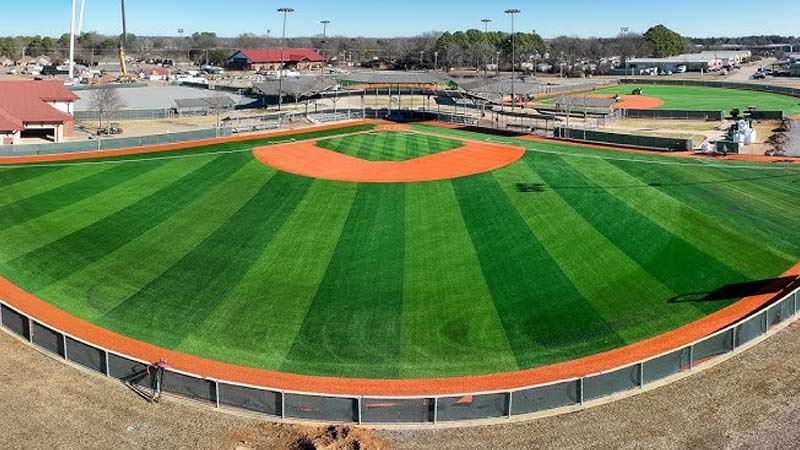In the world of Major League Baseball (MLB), the debate between natural grass and artificial turf stadiums has been a longstanding one. As technology advances, more MLB teams have turned to artificial turf for their playing surfaces, bringing a new dynamic to the game.
The use of artificial turf has sparked discussions among players, fans, and sports enthusiasts about its advantages and disadvantages compared to traditional grass fields.
In this blog post, we will delve into the realm of MLB stadiums with artificial turf, exploring the reasons behind their growing popularity, answering some frequently asked questions, and examining the pros and cons of these unique playing surfaces. So, stay focused.
Are MLB Stadiums with Artificial Turf Better?
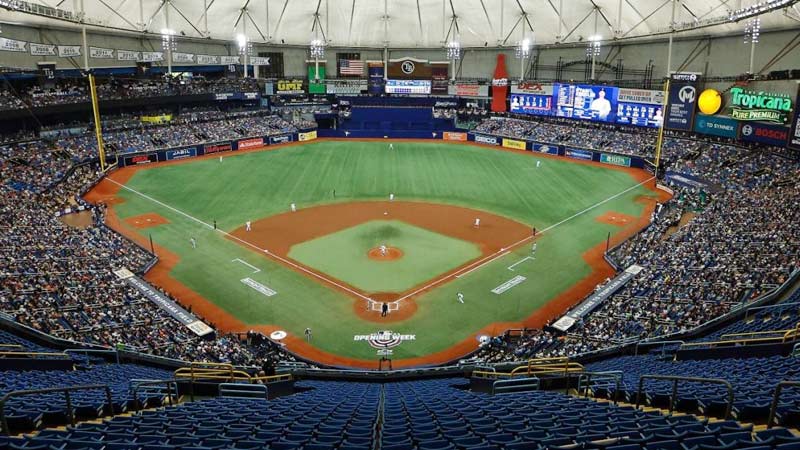
MLB stadiums with artificial turf have both advantages and drawbacks. One major benefit is their resilience to weather conditions, as they are not as affected by rain or extreme temperatures compared to natural grass fields.
This means games are less likely to be postponed or canceled due to adverse weather, ensuring a more consistent schedule.
Moreover, artificial turf requires less maintenance, reducing overall costs and ensuring a more uniform playing surface throughout the season. Players also find the predictable bounce and footing advantageous, which can lead to fewer injuries and better performance.
However, some players and fans argue that artificial turf lacks the natural feel and aesthetics of traditional grass, potentially affecting the game’s tradition and overall experience.
Artificial Turf vs Natural Grass Stadiums
Artificial turf and natural grass stadiums each have their own set of advantages and disadvantages, which influence their popularity and use in different sports, including baseball. Here’s a comparison between the two:
Artificial Turf
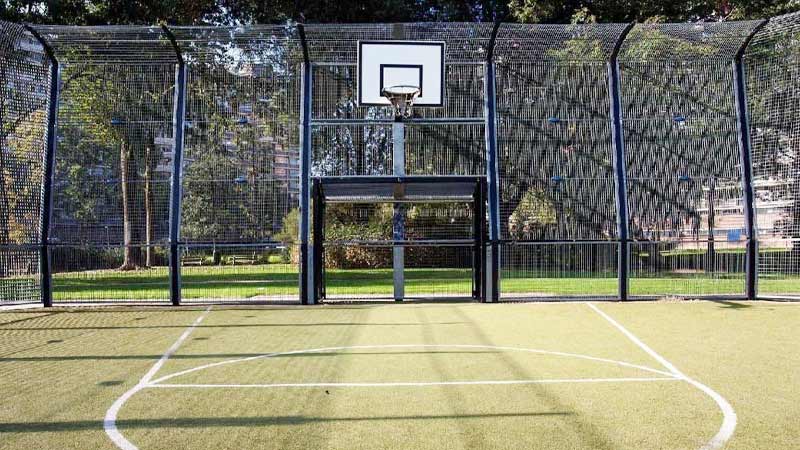
Source: integralgrass.com
Durability
Artificial turf is highly durable and can withstand heavy use, making it suitable for hosting multiple events, including concerts and other sports, without significant wear and tear.
Weather Resistance
Synthetic surfaces drain water efficiently, reducing the chances of rainouts and ensuring more consistent playing conditions in inclement weather.
Low Maintenance
Artificial turf requires less maintenance than natural grass, leading to cost savings and less downtime for maintenance activities.
Consistent Playing Surface
The even and predictable surface allows for more uniform play, with true ball bounces and fewer irregularities.
Natural Grass
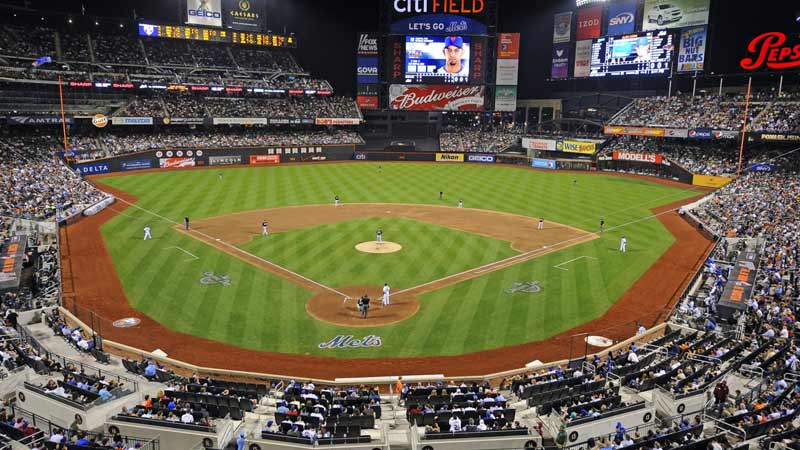
Source: landtekgroup.com
Natural Feel
Many players and fans prefer the traditional look and feel of natural grass, providing a connection to the sport’s roots and enhancing the overall aesthetics.
Player Safety
Natural grass generally provides better shock absorption, reducing the risk of certain injuries like joint and ligament strains.
Environmental Impact
Natural grass is more eco-friendly than artificial turf, which involves the use of synthetic materials and requires disposal at the end of its lifespan.
Cooling Effect
Natural grass tends to be cooler than artificial turf, which can get significantly hotter, especially in warm weather.
5 Best MLB Stadiums with Artificial Turf
The following were considered five of the best MLB stadiums with artificial turf:
Chase Field (Arizona Diamondbacks)
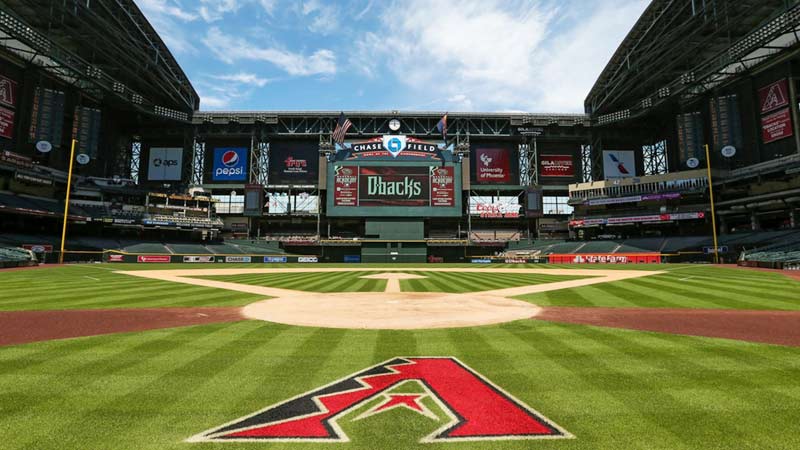
Source: mlb.com
Opened in 1998, Chase Field is known for its retractable roof, which allows the stadium to be used comfortably in Arizona’s hot desert climate.
When the roof is closed, the stadium is air-conditioned, providing relief from scorching temperatures, and creating a more enjoyable experience for players and fans alike. Also, Chase Field has a swimming pool area and a unique dirt strip around the pitcher’s mound, adding to its distinctiveness.
Globe Life Field (Texas Rangers)
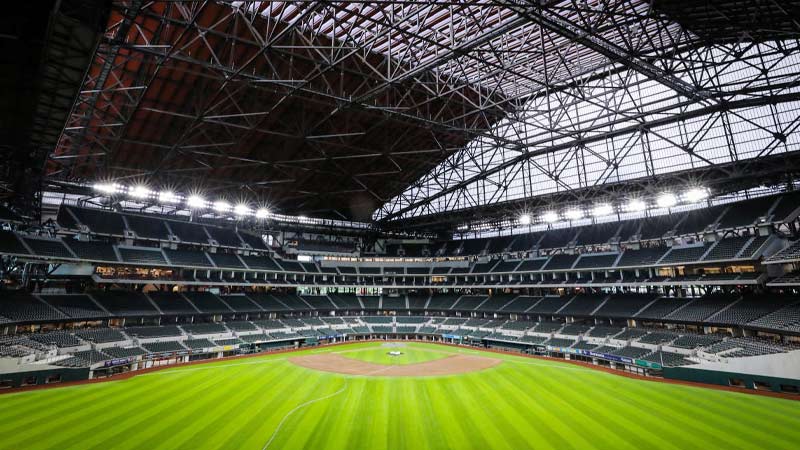
Source: arlington.org
Globe Life Field replaced the previous Globe Life Park in 2020 and offers a modern design with a retractable roof. The stadium’s climate control ensures games can be played comfortably throughout the year, regardless of the extreme Texas heat.
With enhanced technology and comfortable seating, it provides an upgraded experience for fans, making it a top-tier destination for baseball enthusiasts.
loanDepot Park (Miami Marlins)
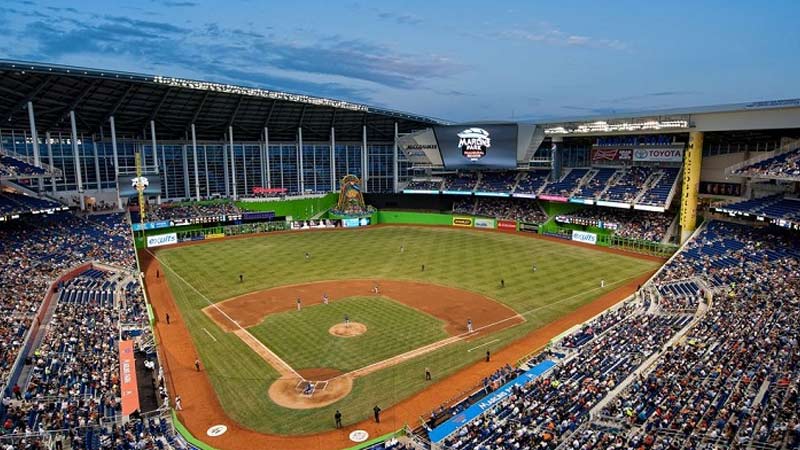
Source: ballparksofbaseball.com
Formerly known as Marlins Park, loanDepot Park features a retractable roof and a visually impressive design. The stadium’s roof protects fans from the hot and humid weather typical of South Florida, making it an ideal venue for baseball games year-round.
The stadium’s striking features, including its colorful home run sculpture, add to the overall fan experience.
Rogers Centre (Toronto Blue Jays)
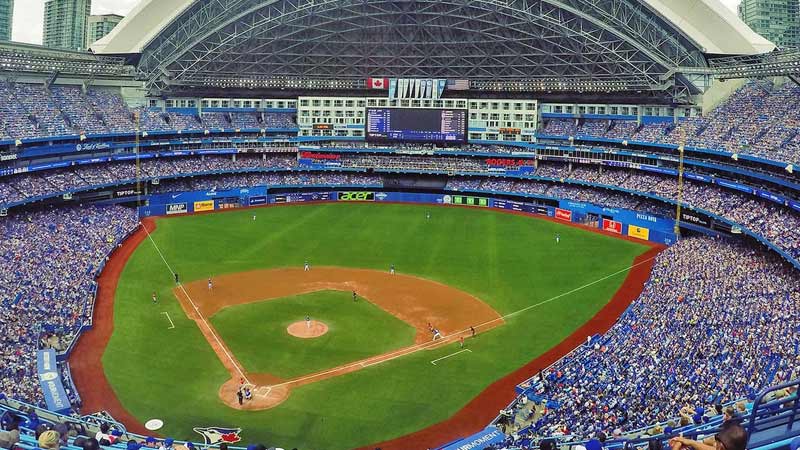
Source: ballparksofbaseball.com
Located in Canada, Rogers Centre was the first stadium to have a fully retractable motorized roof. This innovative feature allows the Blue Jays to host games comfortably, regardless of the unpredictable weather in Toronto.
The roof can be closed during inclement weather or opened to enjoy games under natural sunlight, offering flexibility to the stadium’s operations.
Tropicana Field (Tampa Bay Rays)
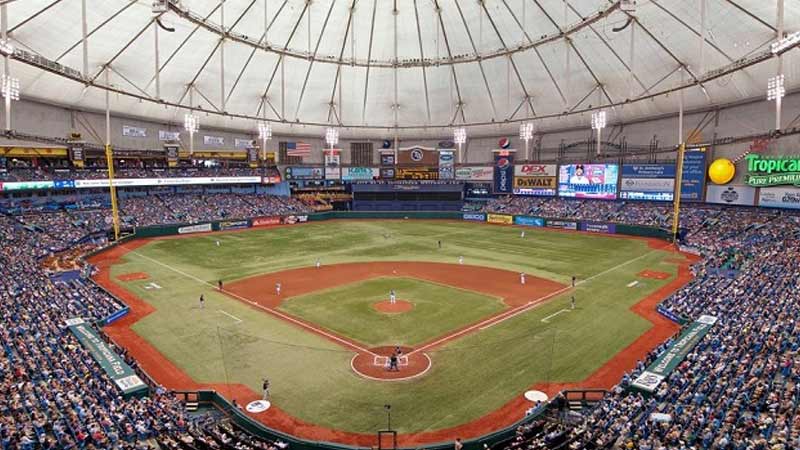
Source: ballparksofbaseball.com
Tropicana Field has a unique fixed translucent roof that protects players and fans from rain and intense heat common in Florida. The stadium’s artificial turf provides a consistent playing surface, and its dome-like structure ensures a controlled environment for games.
While the stadium has faced criticism for its artificial turf and lack of natural light, it serves its purpose well by allowing the Rays to play in a suitable climate throughout the season.
Disadvantages of MLB Stadiums with Artificial Turf
Artificial turf in MLB stadiums offers several advantages, as mentioned earlier, but it also comes with some notable disadvantages. Let’s delve into these drawbacks:
Player Injuries
While artificial turf has improved over the years, it can still be harsh on players’ bodies. The unforgiving surface can lead to more joint and ligament injuries, especially when players make sudden movements, dive, or slide.
This has been a significant concern among athletes, and some have attributed their injuries to playing on artificial turf.
Ball Bounce
The consistent and predictable bounce on artificial turf can affect the game dynamics. Balls tend to bounce more uniformly, making it easier for fielders to anticipate plays, but this might diminish the strategic aspect of the game.
Heat Absorption
Artificial turf can get exceptionally hot, especially in regions with high temperatures. This can be uncomfortable for players and spectators alike, affecting the overall experience of attending a game.
Surface Abrasion
Sliding on artificial turf can be more abrasive and cause friction burns, leading to discomfort and potential minor injuries for players. This can also result in increased wear and tear on uniforms and equipment.
Aesthetics and Tradition
Many fans and players value the tradition and natural beauty of playing on real grass. Artificial turf may lack the authentic charm of natural grass fields, which can impact the overall ambiance of the game.
Environmental Concerns
Artificial turf requires the use of synthetic materials, which raises environmental concerns about the production, disposal, and potential pollution associated with these materials.
Upfront Cost
While artificial turf might save money in the long run due to reduced maintenance, the initial installation cost can be substantial, making it a less attractive option for some stadiums with budget constraints.
In recent years, advancements in turf technology have aimed to address some of these issues, with newer generations of artificial turf designed to be more player-friendly and natural-looking.
Players’ Opinions on MLB Stadiums with Artificial Turf
Players’ opinions on MLB stadiums with artificial turf are diverse and often dependent on personal experiences, playing style, and individual preferences. Here are some common sentiments expressed by players regarding artificial turf:
Favorable Views
Durability and Consistency
Some players appreciate the consistent playing surface of artificial turf, which ensures more predictable ball bounces and fielding conditions. The uniformity of the turf allows players to adapt their play style more easily from one stadium to another.
Weather Resilience
Players acknowledge the advantage of playing on artificial turf in inclement weather. The surface drains water efficiently, reducing rain delays and providing a more reliable playing schedule.
Reduced Maintenance
Many players value the reduced maintenance required for artificial turf, as it means the field remains in good condition throughout the season and requires less pre-game preparation.
Unfavorable Views
Increased Injury Risk
Some players voice concerns about the higher risk of injuries associated with artificial turf. The unforgiving surface can lead to joint and ligament strains, as well as abrasions and friction burns from sliding.
Discomfort and Heat
Artificial turf can become hot, especially in warm weather or under direct sunlight, making it uncomfortable for players during games. The high temperatures may impact player performance and overall experience.
Authenticity and Tradition
Certain players express a preference for the natural feel of playing on real grass. They believe that artificial turf diminishes the traditional aspect of the game and lacks the aesthetic appeal of a natural playing surface.
Mixed Opinions
Adaptation
Some players who grew up playing on natural grass fields may find it challenging to adjust to artificial turf initially. However, over time, they may grow accustomed to the consistent surface and learn to adapt their game accordingly.
Surface Specificity
Certain players perform better on either grass or artificial turf due to their playing style. For example, players who rely on ground balls or sliding may prefer natural grass, while power hitters may appreciate the even bounce of artificial turf.
Players’ opinions on MLB stadiums with artificial turf are subjective and varied. While some embrace the advantages of consistency, weather resilience, and reduced maintenance, others express concerns about injury risks, discomfort, and the departure from traditional playing surfaces.
FAQs
Why do some MLB stadiums have artificial turf?
Artificial turf offers several benefits, including increased durability, weather resistance, and reduced maintenance costs. These factors make it an attractive option for stadiums that host multiple events or face extreme weather conditions.
Do players prefer artificial turf or natural grass?
Player preferences vary, with some enjoying the consistent bounce and uniformity of artificial turf, while others prefer the natural feel and shock absorption provided by real grass.
Some players have expressed concerns about potential injuries on artificial turf surfaces.
How does artificial turf impact gameplay?
Artificial turf’s predictable bounce can affect the game’s dynamics, making fielding more predictable and potentially altering the strategies employed by teams.
Additionally, sliding on artificial turf can be more abrasive, leading to friction burns and discomfort for players.
What are the environmental considerations of artificial turf stadiums?
Artificial turf involves the use of synthetic materials, raising concerns about its environmental impact, including production, disposal, and potential pollution. Natural grass, on the other hand, is more eco-friendly but requires higher maintenance.
Are there any advancements in artificial turf technology?
Over the years, improvements in turf technology have aimed to address the drawbacks of older artificial surfaces. Newer generations of artificial turf strive to be more player-friendly, visually appealing, and environmentally conscious.
Conclusion
As the popularity of MLB stadiums with artificial turf continues to rise, the pros and cons of this modern playing surface remain a subject of debate and contemplation.
While artificial turf offers durability, weather resistance, and lower maintenance costs, it also comes with concerns about player injuries, environmental impact, and the authenticity of the game.
The decision to adopt artificial turf or stick with natural grass depends on various factors, such as climate, budget constraints, and player preferences.
As technology advances, striking a balance between innovation and preserving the timeless traditions of baseball remains crucial in shaping the future of America’s beloved pastime. Best of luck.

